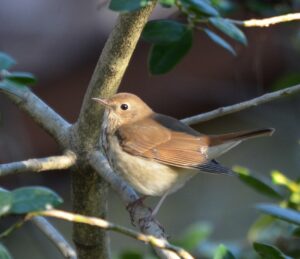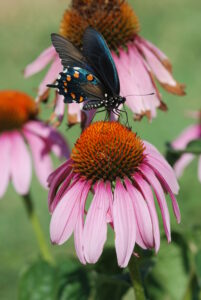Why Landscapes for Wildlife
go.ncsu.edu/readext?811922
en Español / em Português
El inglés es el idioma de control de esta página. En la medida en que haya algún conflicto entre la traducción al inglés y la traducción, el inglés prevalece.
Al hacer clic en el enlace de traducción se activa un servicio de traducción gratuito para convertir la página al español. Al igual que con cualquier traducción por Internet, la conversión no es sensible al contexto y puede que no traduzca el texto en su significado original. NC State Extension no garantiza la exactitud del texto traducido. Por favor, tenga en cuenta que algunas aplicaciones y/o servicios pueden no funcionar como se espera cuando se traducen.
Português
Inglês é o idioma de controle desta página. Na medida que haja algum conflito entre o texto original em Inglês e a tradução, o Inglês prevalece.
Ao clicar no link de tradução, um serviço gratuito de tradução será ativado para converter a página para o Português. Como em qualquer tradução pela internet, a conversão não é sensivel ao contexto e pode não ocorrer a tradução para o significado orginal. O serviço de Extensão da Carolina do Norte (NC State Extension) não garante a exatidão do texto traduzido. Por favor, observe que algumas funções ou serviços podem não funcionar como esperado após a tradução.
English
English is the controlling language of this page. To the extent there is any conflict between the English text and the translation, English controls.
Clicking on the translation link activates a free translation service to convert the page to Spanish. As with any Internet translation, the conversion is not context-sensitive and may not translate the text to its original meaning. NC State Extension does not guarantee the accuracy of the translated text. Please note that some applications and/or services may not function as expected when translated.
Collapse ▲Why Should You Make the Change to Native Plants in Your Landscape?

- More Wildlife – Would you like to have more birds and butterflies in your backyard? Native animals are best adapted to native plants for food and cover, so a well-planned landscape of native plants can help you attract more wildlife to your property.
- Low Maintenance – Plants native to an area are well suited to the local soils and climate, and require relatively little upkeep once established on an appropriate site.
- Avoid Invasive Non-Natives – The spread of invasive, non-native plants poses a threat to native plants and animals around the world. You can do your part to slow down these threats in your area.

- Balance Habitat Loss – With current human population growth, we are losing wildlife habitat at an alarming rate. You can help balance this loss by creating new habitats with native plants.
- Avoid Common Mistakes – Many common landscaping practices, like planting only one species across a large area, are actually bad for wildlife. By creating an integrated native plant landscape you can avoid having a property that provides little or no habitat for wildlife.
Much of the information from this website is available in hard copy in the publications entitled Managing Backyards and Other Urban Habitats for Birds, Butterflies in Your Backyard, Landscaping for Wildlife with Native Plants, and Reptiles and Amphibians in Your Backyard.


